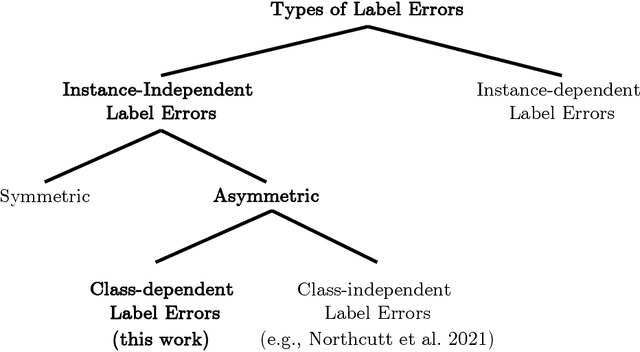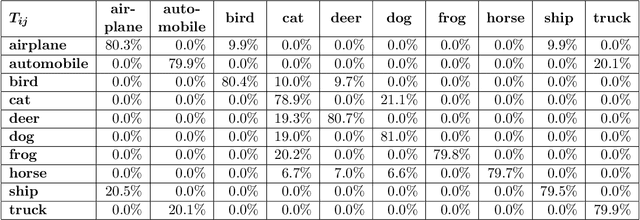Johannes Jakubik
Steve
Task-Agnostic Fusion of Time Series and Imagery for Earth Observation
Oct 27, 2025Abstract:We propose a task-agnostic framework for multimodal fusion of time series and single timestamp images, enabling cross-modal generation and robust downstream performance. Our approach explores deterministic and learned strategies for time series quantization and then leverages a masked correlation learning objective, aligning discrete image and time series tokens in a unified representation space. Instantiated in the Earth observation domain, the pretrained model generates consistent global temperature profiles from satellite imagery and is validated through counterfactual experiments. Across downstream tasks, our task-agnostic pretraining outperforms task-specific fusion by 6\% in R$^2$ and 2\% in RMSE on average, and exceeds baseline methods by 50\% in R$^2$ and 12\% in RMSE. Finally, we analyze gradient sensitivity across modalities, providing insights into model robustness. Code, data, and weights will be released under a permissive license.
Hyperspectral Vision Transformers for Greenhouse Gas Estimations from Space
Apr 23, 2025Abstract:Hyperspectral imaging provides detailed spectral information and holds significant potential for monitoring of greenhouse gases (GHGs). However, its application is constrained by limited spatial coverage and infrequent revisit times. In contrast, multispectral imaging offers broader spatial and temporal coverage but often lacks the spectral detail that can enhance GHG detection. To address these challenges, this study proposes a spectral transformer model that synthesizes hyperspectral data from multispectral inputs. The model is pre-trained via a band-wise masked autoencoder and subsequently fine-tuned on spatio-temporally aligned multispectral-hyperspectral image pairs. The resulting synthetic hyperspectral data retain the spatial and temporal benefits of multispectral imagery and improve GHG prediction accuracy relative to using multispectral data alone. This approach effectively bridges the trade-off between spectral resolution and coverage, highlighting its potential to advance atmospheric monitoring by combining the strengths of hyperspectral and multispectral systems with self-supervised deep learning.
TerraMind: Large-Scale Generative Multimodality for Earth Observation
Apr 15, 2025



Abstract:We present TerraMind, the first any-to-any generative, multimodal foundation model for Earth observation (EO). Unlike other multimodal models, TerraMind is pretrained on dual-scale representations combining both token-level and pixel-level data across modalities. On a token level, TerraMind encodes high-level contextual information to learn cross-modal relationships, while on a pixel level, TerraMind leverages fine-grained representations to capture critical spatial nuances. We pretrained TerraMind on nine geospatial modalities of a global, large-scale dataset. In this paper, we demonstrate that (i) TerraMind's dual-scale early fusion approach unlocks a range of zero-shot and few-shot applications for Earth observation, (ii) TerraMind introduces "Thinking-in-Modalities" (TiM) -- the capability of generating additional artificial data during finetuning and inference to improve the model output -- and (iii) TerraMind achieves beyond state-of-the-art performance in community-standard benchmarks for EO like PANGAEA. The pretraining dataset, the model weights, and our code is open-sourced under a permissive license.
TerraMesh: A Planetary Mosaic of Multimodal Earth Observation Data
Apr 15, 2025Abstract:Large-scale foundation models in Earth Observation can learn versatile, label-efficient representations by leveraging massive amounts of unlabeled data. However, existing public datasets are often limited in scale, geographic coverage, or sensor variety. We introduce TerraMesh, a new globally diverse, multimodal dataset combining optical, synthetic aperture radar, elevation, and land-cover modalities in an Analysis-Ready Data format. TerraMesh includes over 9 million samples with eight spatiotemporal aligned modalities, enabling large-scale pre-training and fostering robust cross-modal correlation learning. We provide detailed data processing steps, comprehensive statistics, and empirical evidence demonstrating improved model performance when pre-trained on TerraMesh. The dataset will be made publicly available with a permissive license.
Beyond the Visible: Multispectral Vision-Language Learning for Earth Observation
Mar 20, 2025Abstract:Vision-language models for Earth observation (EO) typically rely on the visual spectrum of data as the only model input, thus failing to leverage the rich spectral information available in the multispectral channels recorded by satellites. Therefore, in this paper, we introduce Llama3-MS-CLIP, the first vision-language model pre-trained with contrastive learning on a large-scale multispectral dataset and report on the performance gains due to the extended spectral range. Furthermore, we present the largest-to-date image-caption dataset for multispectral data, consisting of one million Sentinel-2 samples and corresponding textual descriptions generated with Llama3-LLaVA-Next and Overture Maps data. We develop a scalable captioning pipeline, which is validated by domain experts. We evaluate Llama3-MS-CLIP on multispectral zero-shot image classification and retrieval using three datasets of varying complexity. Our results demonstrate that Llama3-MS-CLIP significantly outperforms other RGB-based approaches, improving classification accuracy by 6.77% on average and retrieval performance by 4.63% mAP compared to the second-best model. Our results emphasize the relevance of multispectral vision-language learning. We release the image-caption dataset, code, and model weights under an open-source license.
Lossy Neural Compression for Geospatial Analytics: A Review
Mar 03, 2025Abstract:Over the past decades, there has been an explosion in the amount of available Earth Observation (EO) data. The unprecedented coverage of the Earth's surface and atmosphere by satellite imagery has resulted in large volumes of data that must be transmitted to ground stations, stored in data centers, and distributed to end users. Modern Earth System Models (ESMs) face similar challenges, operating at high spatial and temporal resolutions, producing petabytes of data per simulated day. Data compression has gained relevance over the past decade, with neural compression (NC) emerging from deep learning and information theory, making EO data and ESM outputs ideal candidates due to their abundance of unlabeled data. In this review, we outline recent developments in NC applied to geospatial data. We introduce the fundamental concepts of NC including seminal works in its traditional applications to image and video compression domains with focus on lossy compression. We discuss the unique characteristics of EO and ESM data, contrasting them with "natural images", and explain the additional challenges and opportunities they present. Moreover, we review current applications of NC across various EO modalities and explore the limited efforts in ESM compression to date. The advent of self-supervised learning (SSL) and foundation models (FM) has advanced methods to efficiently distill representations from vast unlabeled data. We connect these developments to NC for EO, highlighting the similarities between the two fields and elaborate on the potential of transferring compressed feature representations for machine--to--machine communication. Based on insights drawn from this review, we devise future directions relevant to applications in EO and ESM.
Explainability in AI Based Applications: A Framework for Comparing Different Techniques
Oct 28, 2024Abstract:The integration of artificial intelligence into business processes has significantly enhanced decision-making capabilities across various industries such as finance, healthcare, and retail. However, explaining the decisions made by these AI systems poses a significant challenge due to the opaque nature of recent deep learning models, which typically function as black boxes. To address this opacity, a multitude of explainability techniques have emerged. However, in practical business applications, the challenge lies in selecting an appropriate explainability method that balances comprehensibility with accuracy. This paper addresses the practical need of understanding differences in the output of explainability techniques by proposing a novel method for the assessment of the agreement of different explainability techniques. Based on our proposed methods, we provide a comprehensive comparative analysis of six leading explainability techniques to help guiding the selection of such techniques in practice. Our proposed general-purpose method is evaluated on top of one of the most popular deep learning architectures, the Vision Transformer model, which is frequently employed in business applications. Notably, we propose a novel metric to measure the agreement of explainability techniques that can be interpreted visually. By providing a practical framework for understanding the agreement of diverse explainability techniques, our research aims to facilitate the broader integration of interpretable AI systems in business applications.
Multi-modal graph neural networks for localized off-grid weather forecasting
Oct 16, 2024Abstract:Urgent applications like wildfire management and renewable energy generation require precise, localized weather forecasts near the Earth's surface. However, weather forecast products from machine learning or numerical weather models are currently generated on a global regular grid, on which a naive interpolation cannot accurately reflect fine-grained weather patterns close to the ground. In this work, we train a heterogeneous graph neural network (GNN) end-to-end to downscale gridded forecasts to off-grid locations of interest. This multi-modal GNN takes advantage of local historical weather observations (e.g., wind, temperature) to correct the gridded weather forecast at different lead times towards locally accurate forecasts. Each data modality is modeled as a different type of node in the graph. Using message passing, the node at the prediction location aggregates information from its heterogeneous neighbor nodes. Experiments using weather stations across the Northeastern United States show that our model outperforms a range of data-driven and non-data-driven off-grid forecasting methods. Our approach demonstrates how the gap between global large-scale weather models and locally accurate predictions can be bridged to inform localized decision-making.
Improving Label Error Detection and Elimination with Uncertainty Quantification
May 15, 2024



Abstract:Identifying and handling label errors can significantly enhance the accuracy of supervised machine learning models. Recent approaches for identifying label errors demonstrate that a low self-confidence of models with respect to a certain label represents a good indicator of an erroneous label. However, latest work has built on softmax probabilities to measure self-confidence. In this paper, we argue that -- as softmax probabilities do not reflect a model's predictive uncertainty accurately -- label error detection requires more sophisticated measures of model uncertainty. Therefore, we develop a range of novel, model-agnostic algorithms for Uncertainty Quantification-Based Label Error Detection (UQ-LED), which combine the techniques of confident learning (CL), Monte Carlo Dropout (MCD), model uncertainty measures (e.g., entropy), and ensemble learning to enhance label error detection. We comprehensively evaluate our algorithms on four image classification benchmark datasets in two stages. In the first stage, we demonstrate that our UQ-LED algorithms outperform state-of-the-art confident learning in identifying label errors. In the second stage, we show that removing all identified errors from the training data based on our approach results in higher accuracies than training on all available labeled data. Importantly, besides our contributions to the detection of label errors, we particularly propose a novel approach to generate realistic, class-dependent label errors synthetically. Overall, our study demonstrates that selectively cleaning datasets with UQ-LED algorithms leads to more accurate classifications than using larger, noisier datasets.
Navigating the Synthetic Realm: Harnessing Diffusion-based Models for Laparoscopic Text-to-Image Generation
Dec 05, 2023Abstract:Recent advances in synthetic imaging open up opportunities for obtaining additional data in the field of surgical imaging. This data can provide reliable supplements supporting surgical applications and decision-making through computer vision. Particularly the field of image-guided surgery, such as laparoscopic and robotic-assisted surgery, benefits strongly from synthetic image datasets and virtual surgical training methods. Our study presents an intuitive approach for generating synthetic laparoscopic images from short text prompts using diffusion-based generative models. We demonstrate the usage of state-of-the-art text-to-image architectures in the context of laparoscopic imaging with regard to the surgical removal of the gallbladder as an example. Results on fidelity and diversity demonstrate that diffusion-based models can acquire knowledge about the style and semantics in the field of image-guided surgery. A validation study with a human assessment survey underlines the realistic nature of our synthetic data, as medical personnel detects actual images in a pool with generated images causing a false-positive rate of 66%. In addition, the investigation of a state-of-the-art machine learning model to recognize surgical actions indicates enhanced results when trained with additional generated images of up to 5.20%. Overall, the achieved image quality contributes to the usage of computer-generated images in surgical applications and enhances its path to maturity.
 Add to Chrome
Add to Chrome Add to Firefox
Add to Firefox Add to Edge
Add to Edge